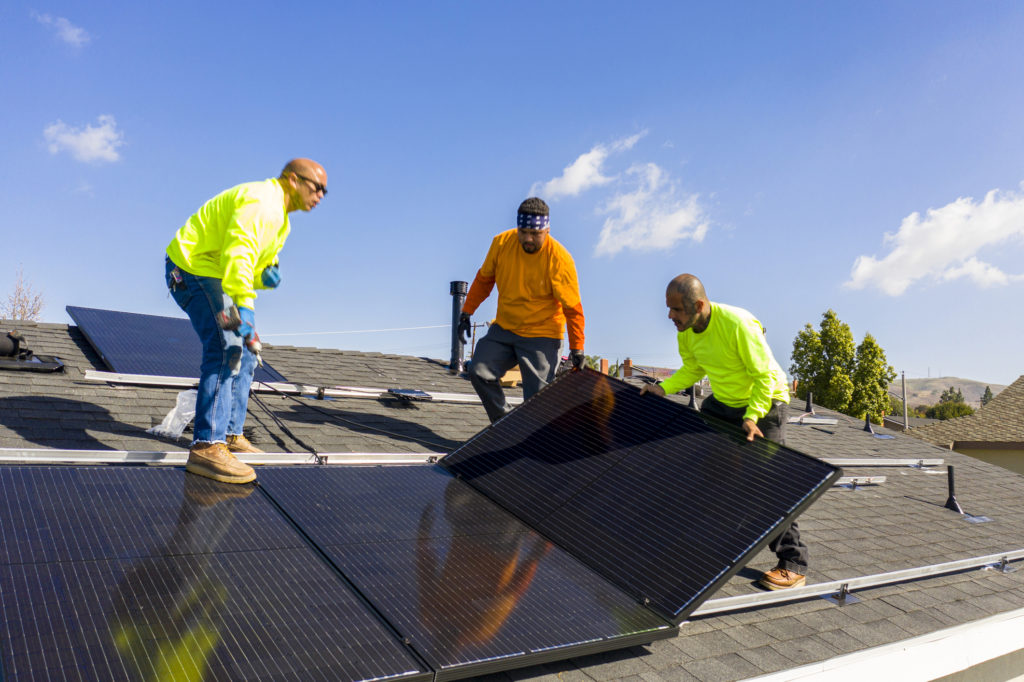
A big legislative compromise between Senate Majority Leader Chuck Schumer (D-N.Y.) and Sen. Joe Manchin (D-W.Va.) includes billions of dollars in incentives for domestic solar panel manufacturing.
The last time we checked in on America’s fledgling solar manufacturing industry, things were looking bleak.
The Biden administration announced in June that it would freeze tariffs on solar imports for two years, bowing to a massive P.R. campaign from solar importers to quash a Commerce Department investigation (that’s still ongoing!) into whether China is shipping products through four Southeast Asian countries to avoid tariffs. Then in July, negotiations over climate change legislation fell apart, which meant proposed subsidies to boost U.S. solar manufacturing appeared to be off the table.
First Solar Inc. CEO Mark Widmar, whose company makes solar panels in both Ohio and Asia, told Reuters the lack of investment was a “blow” to the industry that meant “we’re missing a window of opportunity here for U.S. manufacturing that we may never get back again.” Widmar, who oversees one of the few remaining solar factories in the United States, said that the company wouldn’t build any new factories in the United States, despite rising demand for solar products.
“Where we sit now there is no policy, there’s no direction, there’s no indication for anyone to invest here in the U.S. for solar manufacturing,” Widmar said.
So yeah, things were looking pretty, pretty bad for domestic solar manufacturers. Not only were they now forced to compete against China’s predatory trade practices — which, includes the widespread use of forced labor throughout the solar supply chain — but they also didn’t appear to have the support needed from policymakers to even stay in the game.
But then came a wild card.

It’s a rare thing in Washington these days for a truly surprising thing to happen, but a deal announced last week by Senate Majority Leader Chuck Schumer (D-N.Y.) and Sen. Joe Manchin (D-W.Va.) certainly fits the bill. The Inflation Reduction Act is a massive piece of legislation includes major investments that aim to tackle climate change, with around $369 billion in funding for clean energy, domestic manufacturing of batteries, pollution reduction, and a whole host of other priorities, including $60 billion in incentives for domestic manufacturing of clean energy, mostly for solar panels.
Now, here’s where I offer a brief disclaimer that the Alliance for American Manufacturing (AAM) hasn’t taken a position on the Inflation Reduction Act yet. It’s a real big bill and there’s a whole lot to dive into; I’m sure there will be things we like in it, and issues we hope will be resolved if it does eventually become law.
But the solar incentives in the package are worth talking about right now, especially given the reaction of solar manufacturers themselves:
That’s not Al Michaels, but rather Scott Moskowitz, the head of market intelligence and public affairs at QCells North America, a South Korean company that makes solar products at a major factory in Georgia. Moskowitz told The Washington Post that the U.S. has fallen behind in the global solar market, but the new bill may be a turning point:
“This country never had policies that created the environment possible to compete. This legislation changes things a lot. It will make companies want to invest in new manufacturing in Georgia and around the country.”
And remember Mark Widmar and First Solar, the company that decided to forgo building new solar factories in the United States because policymakers weren’t doing enough?
Widmar said on an earnings call on Thursday that “in light of these latest developments, and should the Inflation Reduction Act pass with consistent language on solar-related tax credits, we plan to pivot quickly to re-evaluate U.S. manufacturing expansion.”
That’s quite a change!
When Congress approved $52 billion in funding last week for domestic semiconductor production, AAM President Scott Paul noted that “semiconductors were invented in the United States, and they should be made here, too.” It’s the same with solar panels — modern solar cells are a U.S. invention, and at the start of the 21st century, we appeared well positioned to make them in the United States.
A series of bad policy decisions and a failure to properly enforce our trade laws meant that the United States lost most of the production capacity it built. The U.S. now just makes 1% of the world’s solar products, while China controls around 80% of the world’s solar panel production and 95% of certain elements needed to make them.
But as we’ve said many times before: The United States shouldn’t trade foreign oil for Made in China solar panels, especially given the significant human rights costs of those panels.
The answer is to make more solar panels here.
Like the semiconductor package passed last week, investments in U.S. solar panel production will help secure our economic and national security, allowing us to build a clean energy future that isn’t dependent on our chief geopolitical adversary. But it isn’t enough — the United States also must be willing to enforce its trade laws to ensure that America’s solar workers and manufacturers can compete on the global stage.
We’ll likely have more thoughts on the Inflation Reduction Act over the coming days, and we’ll be sure to keep an eye on the solar investments in the bill moving ahead. The bill could move quickly through the Senate, as Schumer said he wants to bring it to the Senate floor this week.
